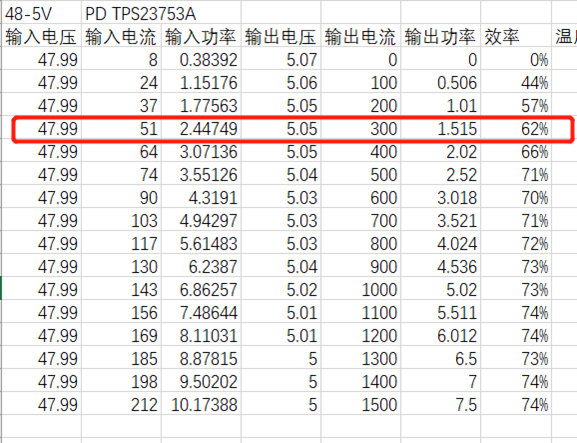Hi Team,
customer were facing a problem related to low efficiency.
end equipment: Digital microphone with using POE as power supply. since the customer end product is in small package so the power loss and themral preformance is important.
when test the efficiency, they found that the efficiency is only about 62% with 5V@300mA output. attached the testing data as follow
from left to righ, you can find input voltage, input current(mA),input power, output voltage, output current and efficiency.
we tried to reduce the switching frequency from250khz to 50khz, it do can improve the efficiency and it bring a large disturb(600hz to 2khz) when microphone is recording.
here we have some support need:
1) can you give us some comment related to the schemtic i attached below? which may improve the performance?
2)with 250khz switching frequency, whether this is abnormal when R388 is serious heating? how can we change or improve the thremal proformance?
3)after changing switching frequency to 50khz, How can we adjust the circuit to reduce the disturb
BR
Brandon.

